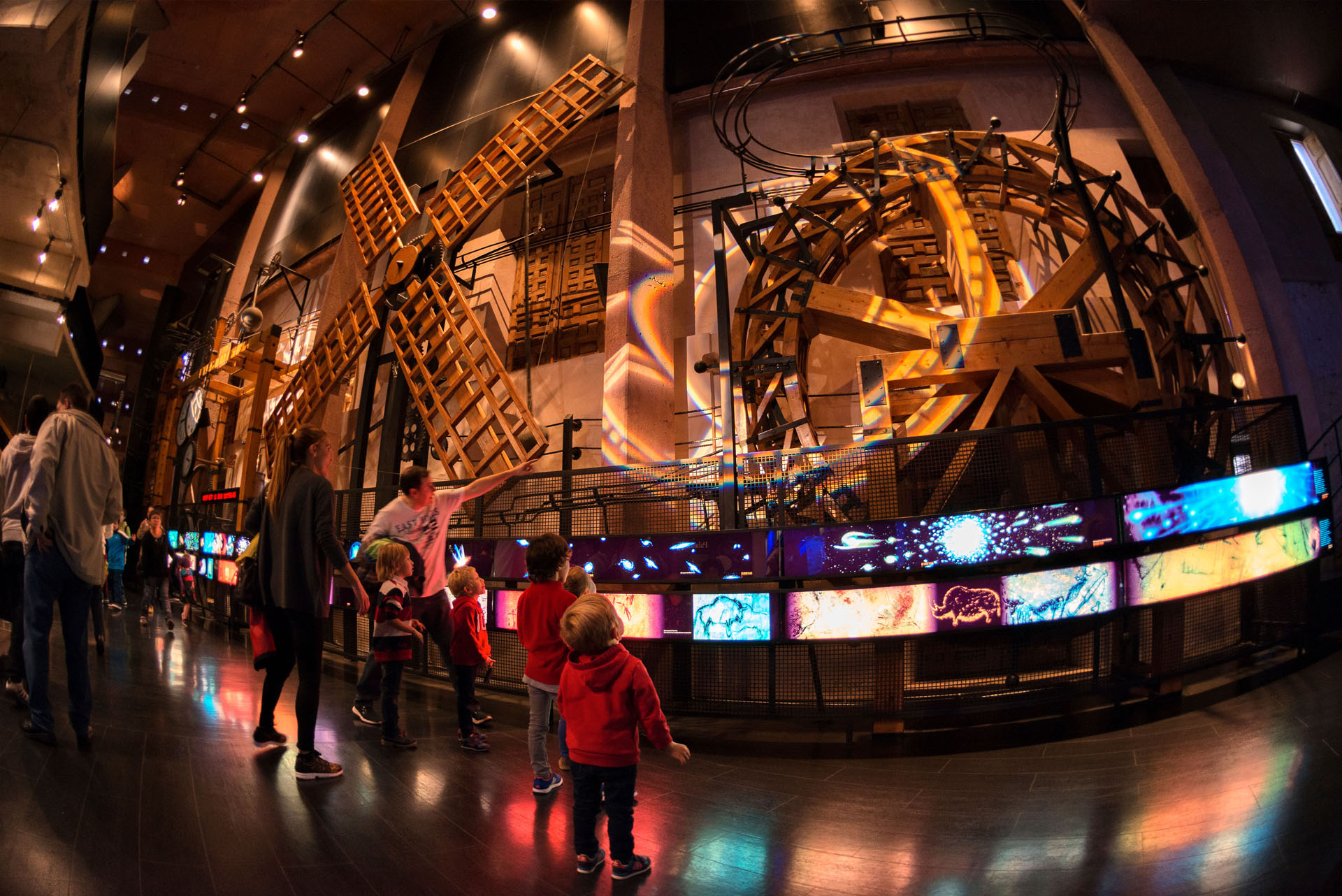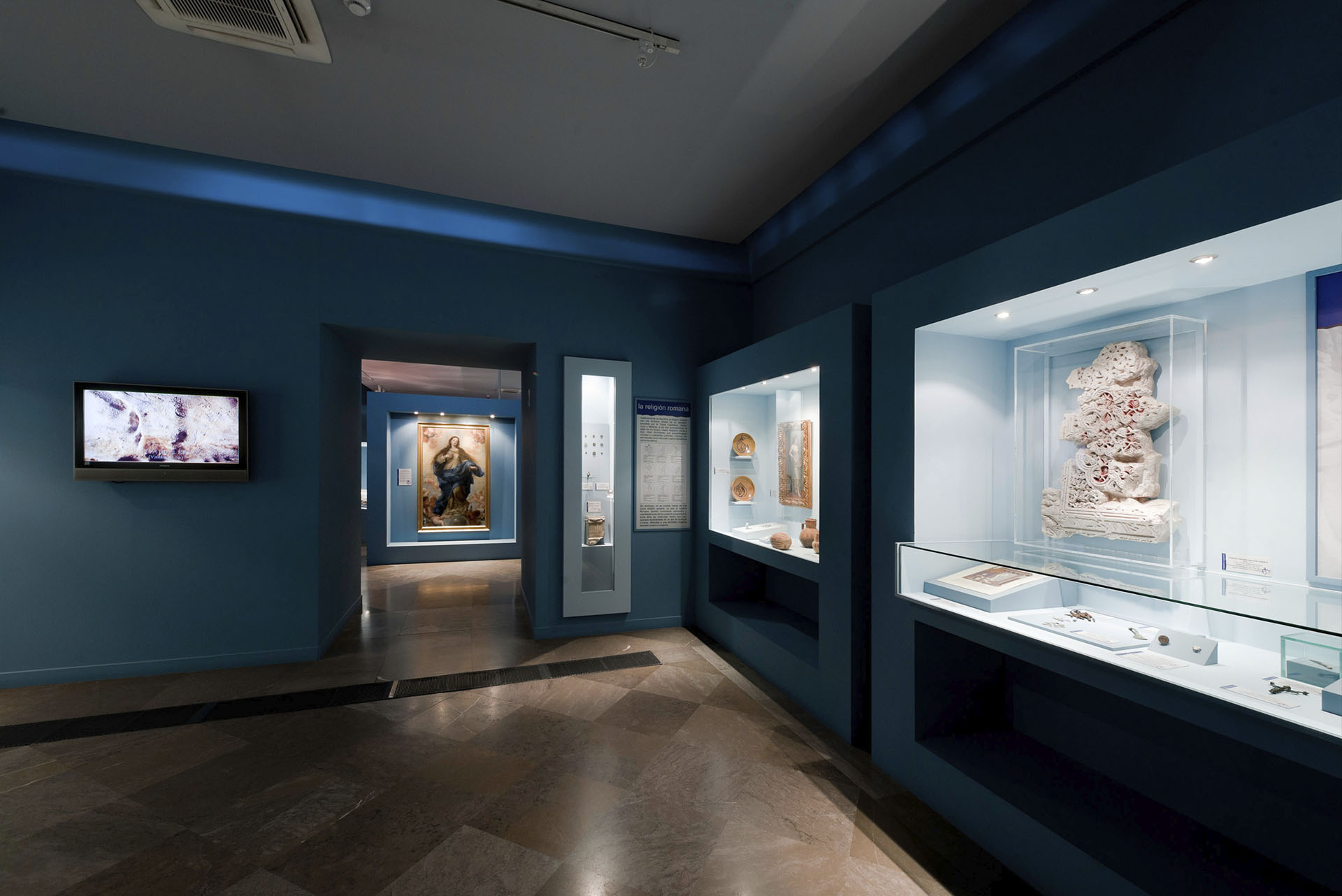Castilla-La Mancha has an impressive network of museums to know and discover the best of Art, History, traditions, Science … Museums housed in magnificent buildings full of history that are distributed throughout the region for the enjoyment of all audiences. From the origins of humanity to the most current movements in Art, Castilla-La Mancha offers the opportunity to enjoy authentic oases of culture and knowledge. Interesting places for adults and children … These are just some of them:
Castilla-La Mancha Science Museum, Cuenca
The Science Museum of Castilla-La Mancha is located in the old town of the Cuenca capital, in the small Plaza de la Merced, it is the perfect place for the whole family. It consists of two buildings, an old convent and the contemporary extension, in which the different areas of content and areas are distributed.
Since its opening in 1999, it has been renewed: in 2009, the new contents of the areas “History of the Future” and “The Engine of Life” were articulated in a new, attractive and interactive journey; in 2017 a new improvement in “The Treasures of the Earth”, renews and strengthens the museum discourse. In the new route we will travel through time connecting all thematic areas: from the knowledge of the Earth, to the exploration of Mars; from the importance of space research for science and for everyday life, to remote sensing, meteorology and climate; from the debate on climate change to the knowledge of energy, its responsible use and the importance of renewable energy in the world and in our region. Not forgetting its planetarium and astronomy room.
The Museum invites you not only to see and listen, but above all to participate, to touch and interact with the new content, the new facilities and the experimental modules that you will find during your visit.

Guadalajara Museum
Inaugurated in 1838, the Guadalajara Museum is the oldest provincial museum in Spain. Since 1973 its headquarters has been the Palacio del Infantado, an impressive building built at the end of the 15th century, undoubtedly the city’s greatest architectural jewel, symbol and pride of all citizens. Today it is a great center for the conservation, research, exhibition and learning of cultural heritage, which takes advantage of all the spaces of its admirable headquarters with its exhibition rooms, warehouses and workshops, it is a powerful cultural center that houses activities of all kinds everywhere.
The Guadalajara Museum guards the most relevant objects of the Cultural Heritage of the province. Its collections are divided into three sections: Fine Arts, Archeology and Ethnography, which are presented together in a new way in its permanent exhibition area, Works by Alonso Cano, Ribera, Carreño or La Roldana, Celtiberian and medieval remains, among others, and objects of popular culture illustrate the transit of different cultures through the province.

Casa Dulcinea del Toboso Museum, El Toboso (Toledo)
Within the framework of the commemoration of the IV Centenary of the publication of Don Quixote de la Mancha, Casa Dulcinea Museum has reopened, after a remodeling that has updated the facilities and exhibition contents with a new assembly that recreates the life of a house of wealthy hidalgos of the Cervantine era.
This museum is housed in a building that maintains part of its original structure from the 16th century, and despite the time that has elapsed and the alterations experienced over the centuries, it generally preserves the characters of the La Mancha house of a hidalgo with its various dependencies: mill, cellar, patios, corrals, wells, etc.
This house belonged to one of the most illustrious families of El Toboso, the Martínez Zarco de Morales, whose shields we can see on the façade. According to tradition, in Cervantine times it was inhabited by Don Esteban and Doña Ana, his sister, who inspired the character of Dulcinea de El Toboso.

Albacete Museum
The Museum of Albacete represents the historical and cultural evolution of the province of Albacete, as an integral part of the historical-artistic and cultural heritage of Castilla-La Mancha and turns out to be a valuable archive for provincial archeology, with national projection due to the quality of many of the findings produced. Its mission is to contribute to the knowledge of the peoples through the dissemination of the cultural heritage that it preserves.
In short, a walk through the Museum of Albacete and the Abelardo Sánchez park in which it is located, will not disappoint the visitor.
The permanent exhibition rooms offer the possibility of making a visit following a chronological order. The nine rooms dedicated to the archeology of the province allow us to delve into the history of the Museum, learn about the most outstanding elements of Prehistory (ancient and recent), or the great wealth of Iberian culture in the province of Albacete that is displayed through objects from villages, necropolis and sanctuaries, highlighting a rich and magnificent sculptural ensemble dated between the 6th and 1st centuries BC. From ancient Rome, commemorative and funerary inscriptions, sculptures, objects of everyday life, the unique collection of Roman dolls and mosaics are exhibited. A small room offers the visitor a brief tour of the coins from the Greek to the 19th century. The eighth room shows Visigothic archeology through liturgical elements, household items, and ceramics used in funeral rituals; and Islamic archeology is present through ceramics, architecture, and the exceptional caliphal trousseau found in Liétor. The tour of the archeology rooms is closed by pieces from the thirteenth to eighteenth centuries from archaeological interventions, as well as the Albacete term cross as the most outstanding sculptural monument.
Ciudad Real Museum
The Ciudad Real Museum has two locations in the center of the city: the Prado street building and the La Merced Convent.
The original building, located on Prado Street, exhibits the Archeology and Paleontology collections. The Paleontology collection is made up of fossil remains from various provincial deposits, which allow a journey through the geological periods from the Cambrian to the Quaternary. It highlights the specimen of the mastodon Anancus Arvernensis found in Alcolea de Calatrava or the rhinoceros Stephanorthinus etruscus, the oldest known in Europe. The exhibition integrates scenographies that facilitate the understanding of the environment in which these species could develop.
The headquarters of Fine Arts is located in the Convent of La Merced, founded in the early seventeenth century and transformed in the nineteenth century into a secondary school. In 2005 it was enabled as an exhibition center and since 2013 it houses the Fine Arts Section of the Ciudad Real Museum. The Fine Arts collection is displayed on the two floors. On the ground floor are exhibited works of painting, sculpture, goldsmithing and ceramics that span the 16th to 18th centuries, in a montage that tries to value the conventual period of the building and analyze the works of art exhibited as a reflection of the values and customs of his time.
On the first floor there is a selection of the most representative Spanish Contemporary Art from the 19th to 21st centuries with works made by renowned artists such as Alberto Sánchez, Antonio Saura, Tapies and Chillida, among others.
In addition to these impressive museums, Castilla-La Mancha has many others to discover the dazzling ceramics of Talavera de la Reina, the Visigothic culture that dominated the Iberian Peninsula, the exceptional Roberto Polo collection, etc. And you can visit all of them completely free until the end of the year.

